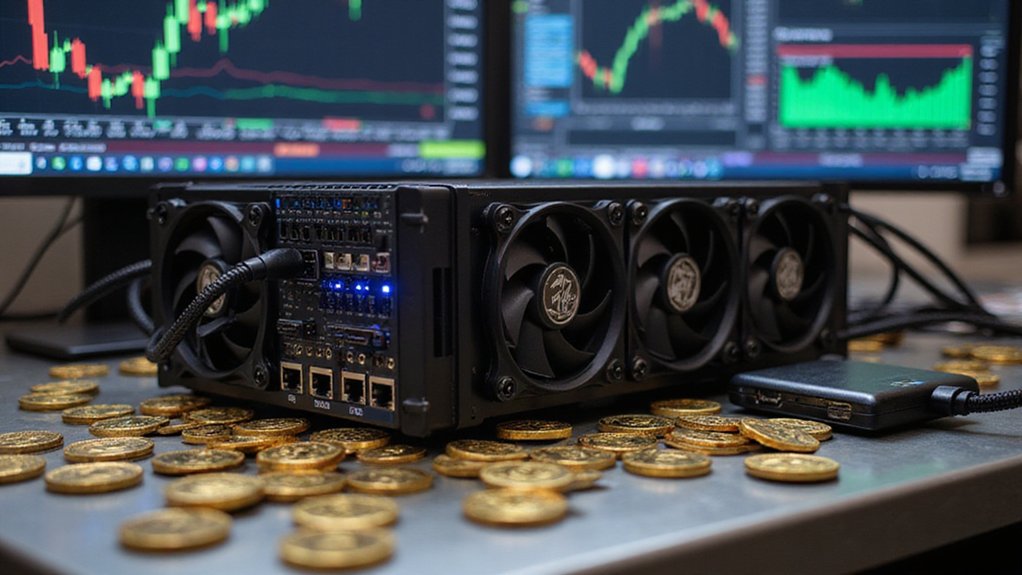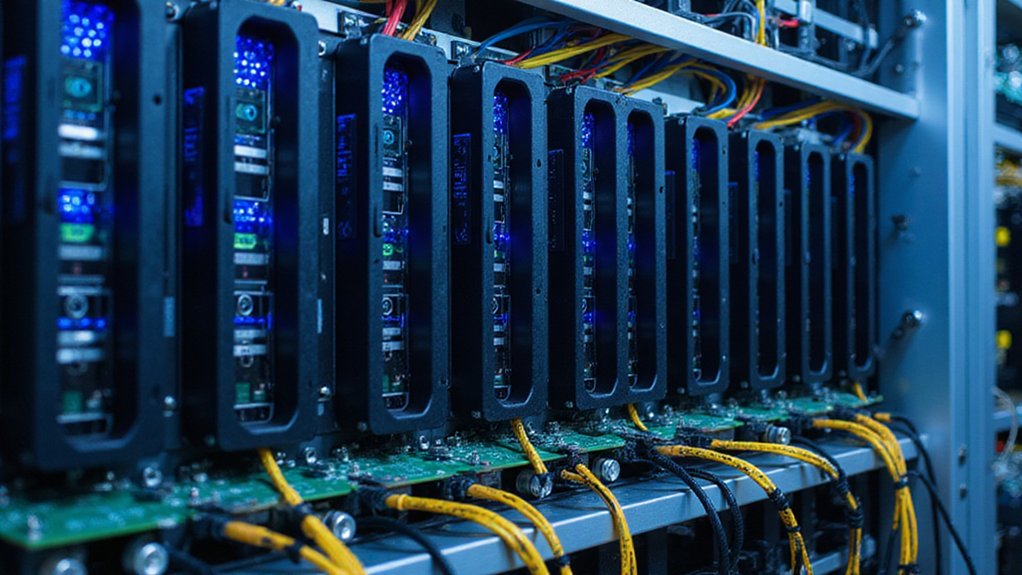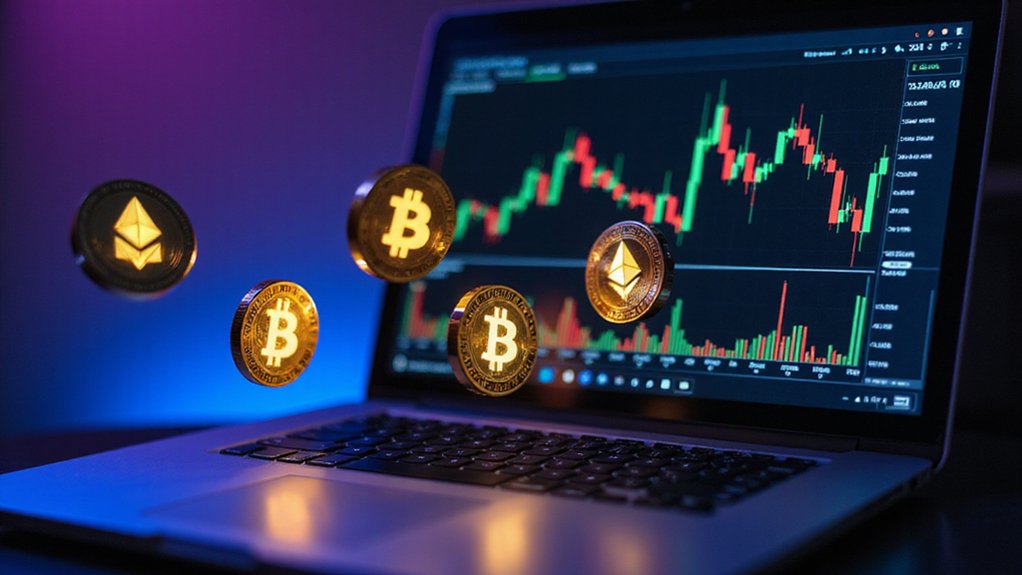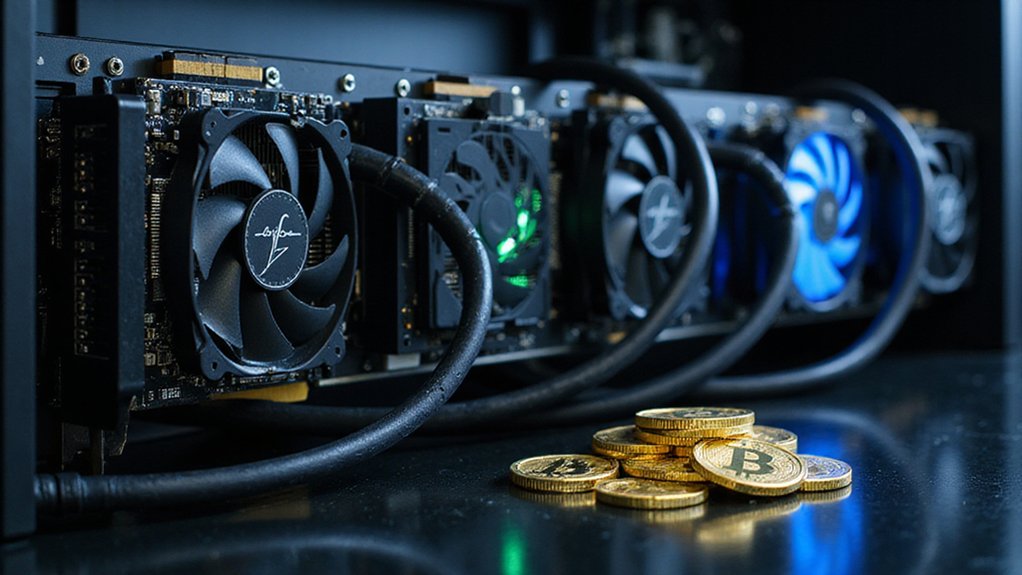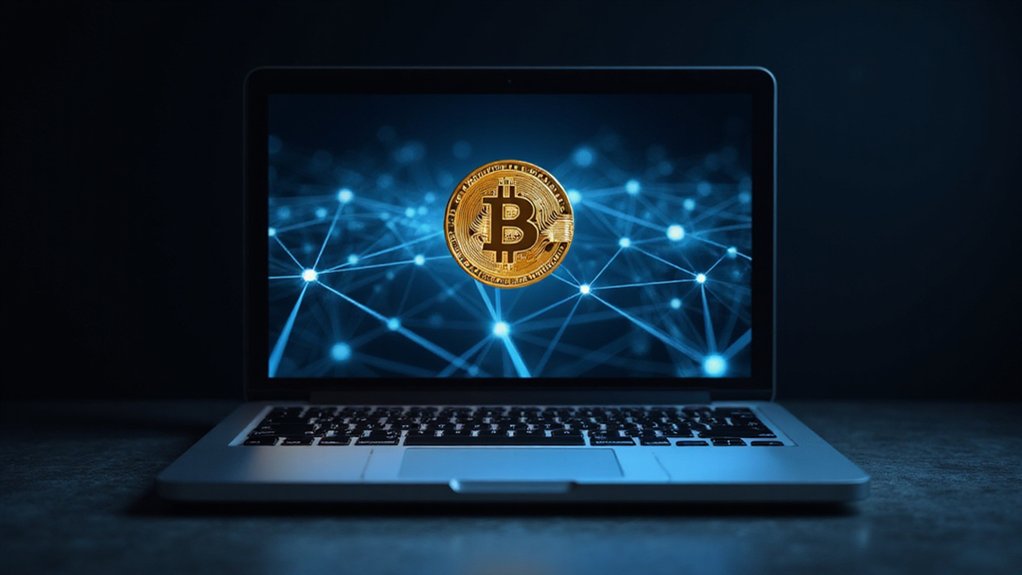Bitcoin mining transforms computers into digital prospectors competing to solve cryptographic puzzles that verify transactions and earn rewards—currently around $200,000 per block, though one might question whether running what fundamentally amounts to an expensive space heater makes financial sense. Modern mining requires specialized ASIC hardware, robust software, and cheap electricity, with most individual miners joining pools to share resources and split rewards. The process involves SHA-256 hashing algorithms, occurs every ten minutes, and becomes increasingly competitive as large operations dominate the landscape—though understanding the technical mechanics and economic calculations reveals whether this digital gold rush offers genuine opportunity or merely glittering illusion.
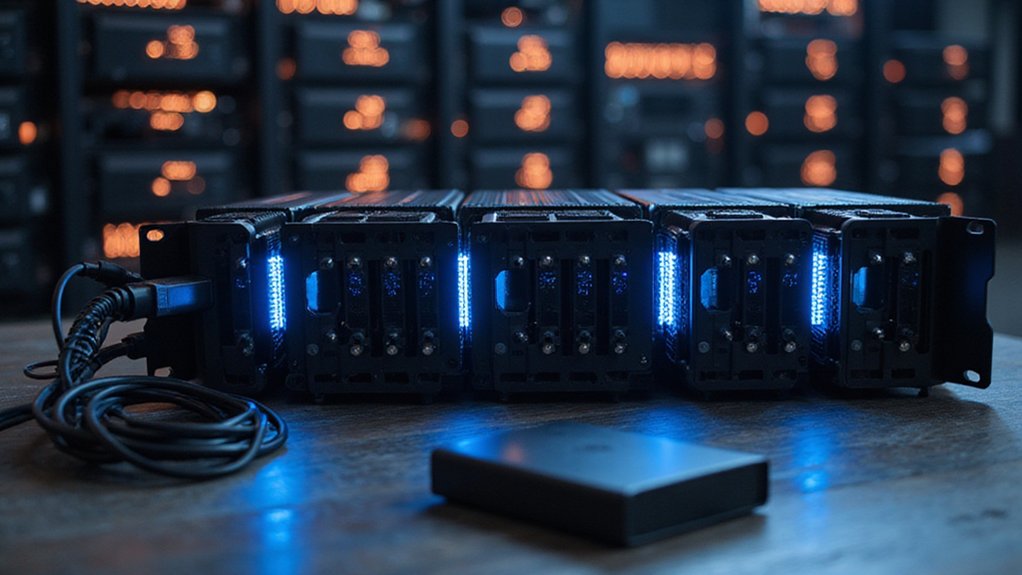
Mining bitcoins transforms one’s computer into a digital prospector, competing in a global lottery where the prize is cryptocurrency and the price of admission is electricity. This process involves solving cryptographic puzzles that verify transactions and add them to the blockchain ledger—a task that requires miners to expend computational energy through a Proof-of-Work consensus mechanism. Only the first miner to crack each puzzle receives the bitcoin reward and associated transaction fees, making timing everything in this digital gold rush.
The hardware requirements have evolved considerably since bitcoin’s inception. Modern mining demands specialized equipment: ASICs (application-specific integrated circuits) designed exclusively for cryptocurrency mining, high-performance GPUs, and robust SSDs. These components must be paired with mining software that connects the hardware to the blockchain network and manages operations autonomously. A secure bitcoin wallet becomes essential for storing any hard-earned digital currency—assuming one actually mines any.
The mining process follows a structured workflow where transactions are grouped into blocks using Merkle trees for efficient verification. Miners compete to solve cryptographic hash puzzles tied to each block’s data, with successful solutions broadcast to the network for validation by other nodes. Upon verification, the new block links securely to previous blocks, extending the blockchain’s immutable chain. New blocks are created approximately every 10 minutes, with the network automatically adjusting difficulty every 2016 blocks to maintain this consistent timing. Bitcoin mining relies on the SHA-256 hashing algorithm to ensure the cryptographic security of each block.
Most beginners face a choice between solo mining (requiring substantial computational power and resources) and pool mining, where multiple miners share resources and split rewards proportionally. Cloud mining offers an alternative where users rent remote hardware, though this approach carries its own risks and often disappointing returns. The crypto mining landscape has transformed as large mining operations have largely replaced individual PC users in the competitive race to solve hash puzzles.
The economic reality proves sobering. Mining profitability depends on hardware efficiency, electricity costs, bitcoin’s volatile price, and network difficulty—variables that shift constantly. Energy consumption remains significant, as mining requires continuous operation of power-intensive hardware. Mining rewards halve approximately every four years, creating long-term uncertainty about incentives.
Environmental and regulatory scrutiny continues mounting due to mining’s substantial energy demands. Transaction fees increasingly supplement diminishing block rewards, though whether this compensation adequately motivates miners remains an open question.
For most individuals, mining represents more educational exercise than profitable venture—a expensive lesson in cryptocurrency economics.
Frequently Asked Questions
Is Bitcoin Mining Legal in My Country?
Bitcoin mining’s legality varies dramatically across jurisdictions, creating a patchwork of regulatory approaches that would make constitutional scholars weep.
Most developed nations—including the United States, Australia, and Canada—permit mining operations, though tax compliance remains mandatory (naturally).
China maintains its characteristically decisive ban, while Kazakhstan has embraced legal frameworks.
Europe generally allows mining provided operators navigate local regulations and energy policies, though environmental concerns increasingly influence legislative attitudes toward this energy-intensive endeavor.
How Much Electricity Does Bitcoin Mining Consume Monthly?
Bitcoin mining devours approximately 6.7 to 14.2 terawatt-hours monthly—enough electricity to power entire nations, which seems rather excessive for digital ledger maintenance.
This staggering consumption (representing roughly 1% of global electricity use) fluctuates wildly based on Bitcoin’s price volatility and mining difficulty adjustments.
The United States alone accounts for 38% of this energy appetite, while miners chase cheap electricity across jurisdictions with the determination of moths pursuing flames.
Can I Mine Bitcoin on My Smartphone or Tablet?
While technically feasible, mining Bitcoin on smartphones represents a masterclass in futility.
Mobile devices lack the computational horsepower to compete against specialized ASIC miners, rendering meaningful rewards virtually nonexistent. The endeavor consumes battery life, generates excessive heat, and accelerates device degradation—all while earning negligible returns.
Cloud mining apps offer remote participation in mining pools, though users must navigate reputation risks and fees carefully before engaging in such ventures.
What Happens to Bitcoin Mining When All Coins Are Mined?
When Bitcoin’s final coin emerges around 2140, miners will pivot entirely to transaction fees for compensation—a shift that could prove remarkably precarious.
Without block subsidies, network security depends wholly on users paying sufficient fees to maintain mining profitability.
This fee-only model might concentrate mining among ultra-efficient operators, potentially compromising decentralization while transforming Bitcoin’s economic dynamics from inflationary issuance to pure scarcity-driven value proposition.
Do I Need to Pay Taxes on Bitcoin Mining Profits?
Bitcoin mining profits face dual taxation hurdles that would make even seasoned accountants wince.
Mining rewards constitute ordinary income at fair market value upon receipt, subject to standard income tax rates.
When miners eventually sell their digital treasure, capital gains tax applies to any appreciation since mining.
The IRS’s new wallet-by-wallet tracking requirements (effective 2025) add Byzantine complexity, transforming simple transactions into accounting nightmares requiring meticulous record-keeping.
